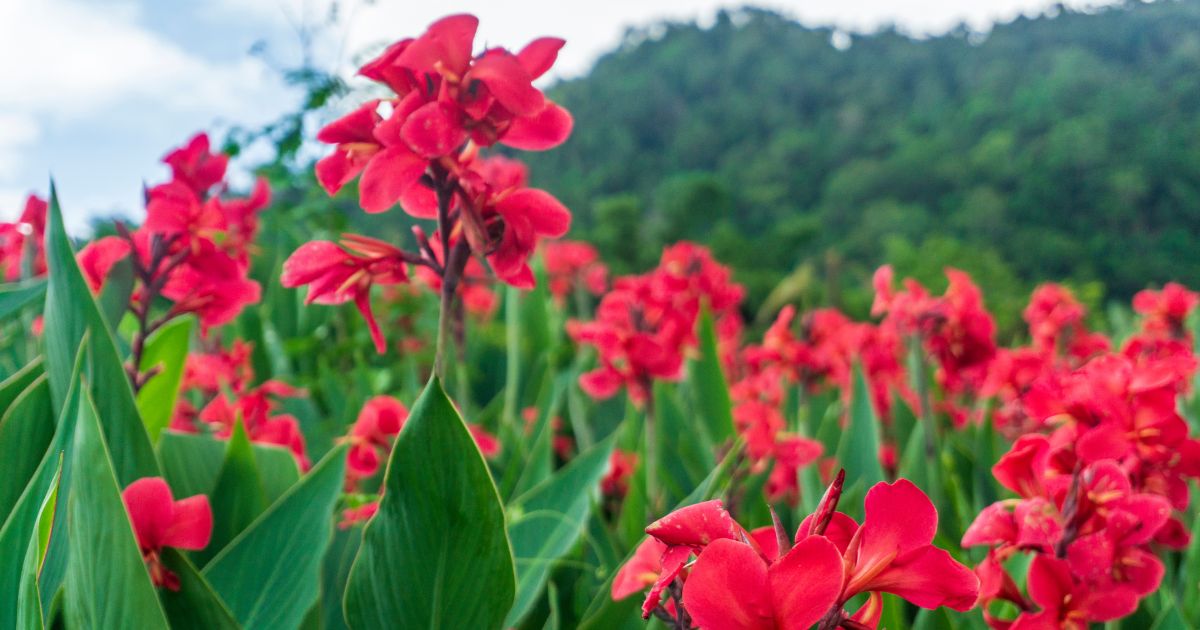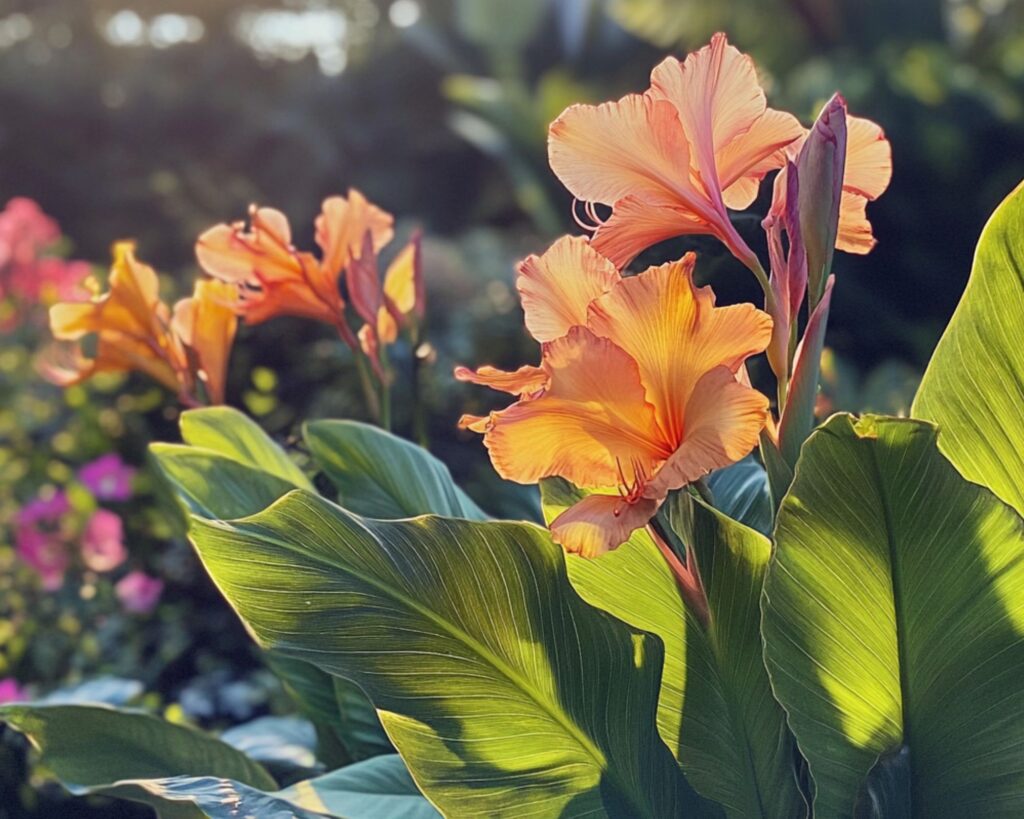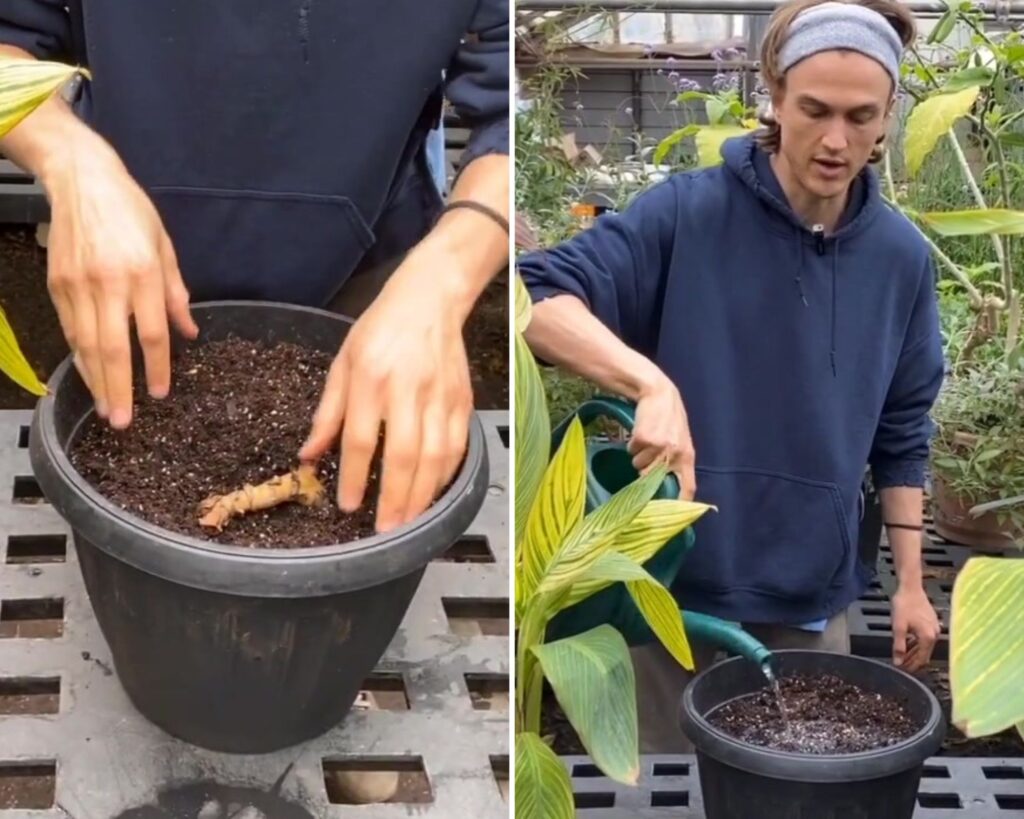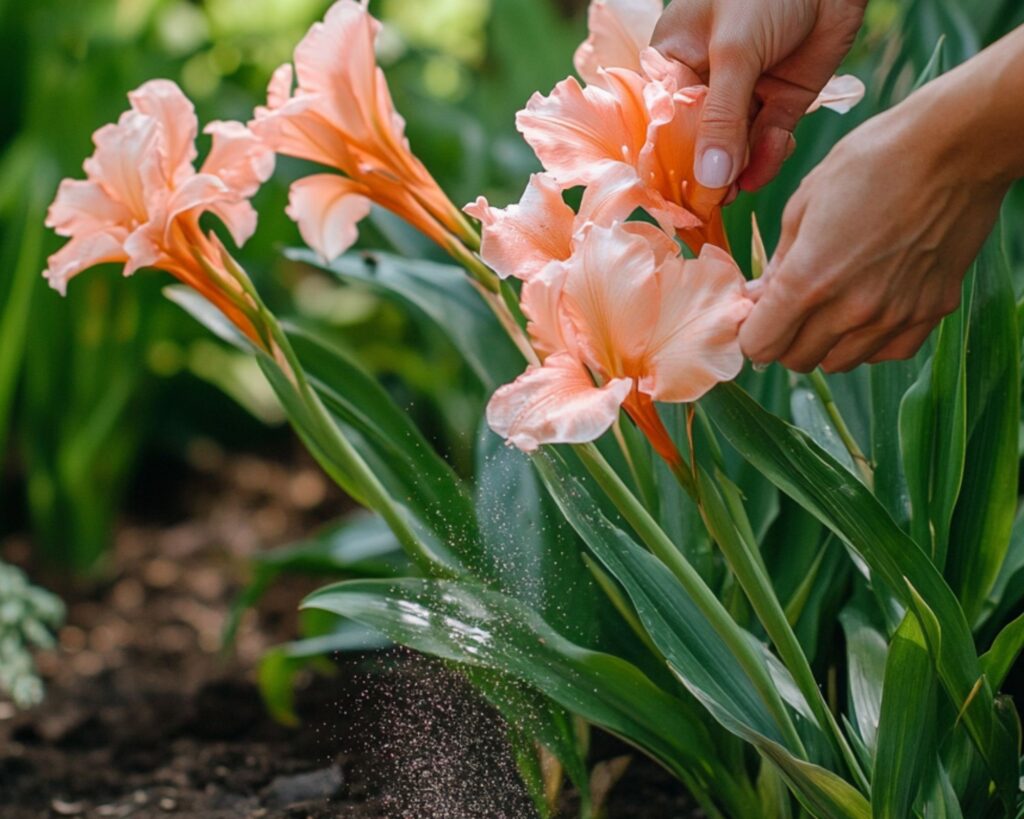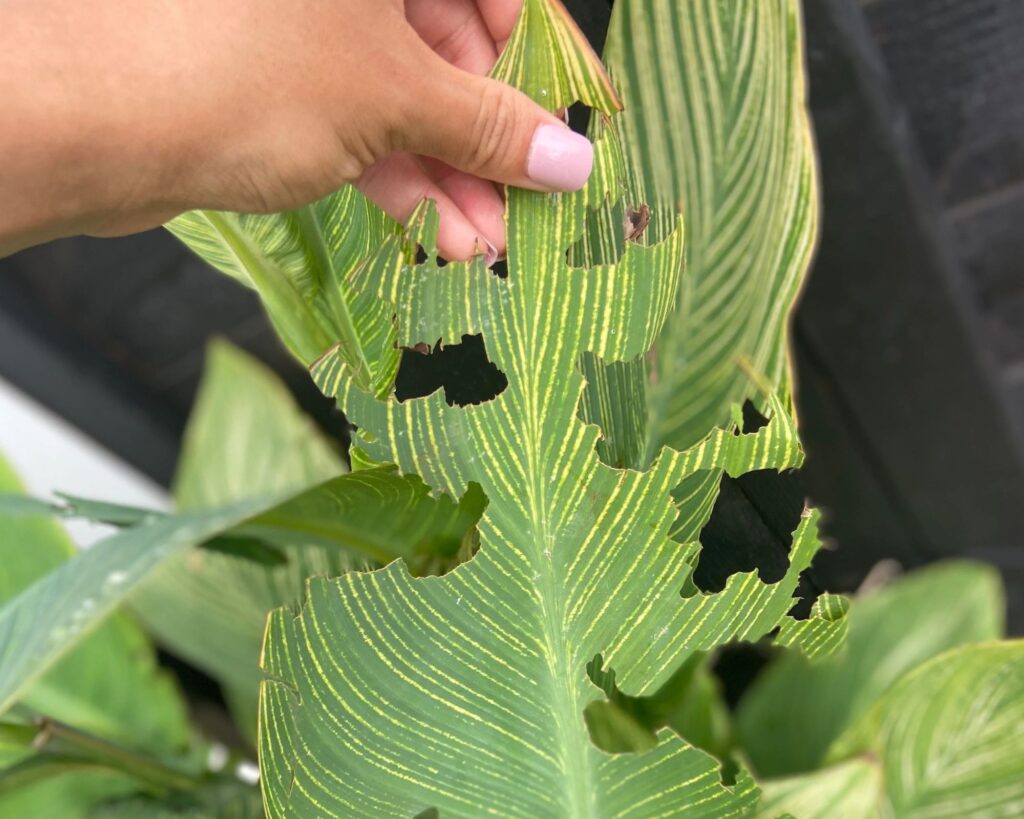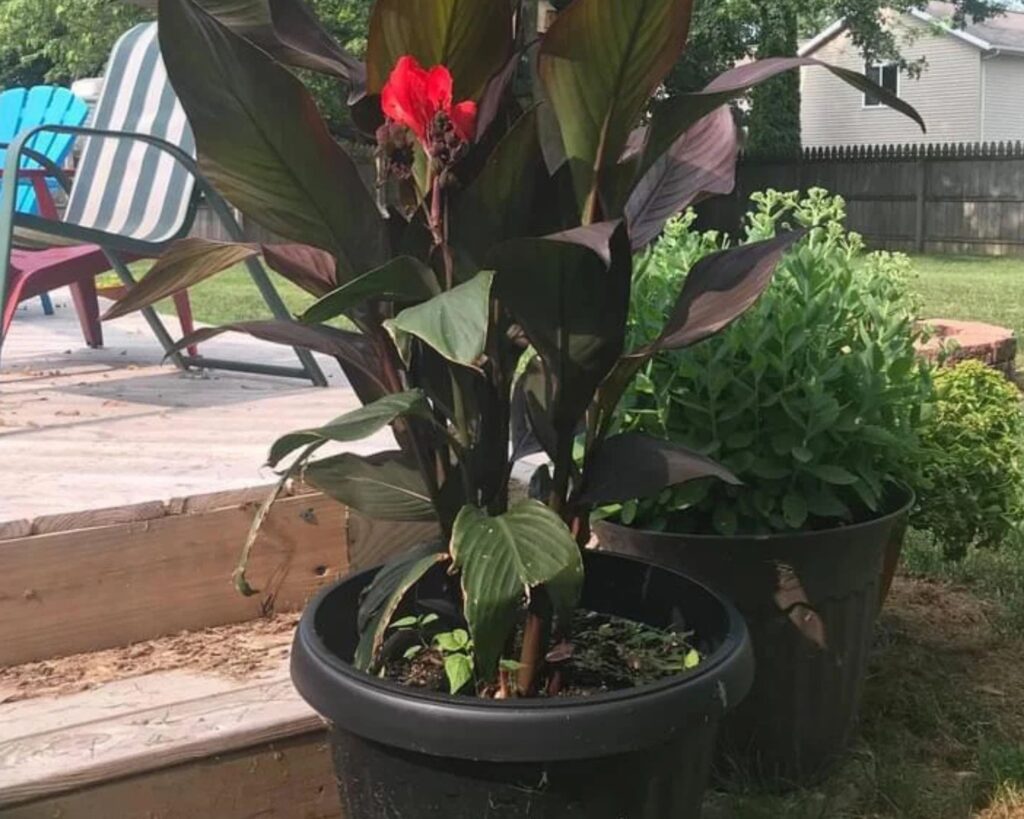Looking to transform your garden into a vibrant tropical paradise? Canna lilies, with their bold foliage and dazzling blooms, are the perfect way to make your outdoor space stand out.
But growing these exotic beauties can feel like a challenge if you’re not sure how to care for them.
The good news? With the right approach, you can nurture stunning canna lilies that bloom profusely and elevate your garden’s aesthetic appeal.
In this guide, I’ll walk you through simple yet powerful tips to ensure your canna lilies thrive year after year – no green thumb required! Ready to discover the secrets to lush, tropical beauty? Let’s dive in!
Choosing the Right Location
Canna lilies thrive in warm, sunny locations. They are tropical plants, meaning they need plenty of sunshine and warmth to flourish.
When selecting a spot in your garden or yard, consider the following:
- Sunlight: Canna lilies require at least 6-8 hours of full sunlight per day. While they can tolerate partial shade, too much shade will lead to less blooming and slower growth.
- Shelter from Wind: Their large leaves can be damaged by strong winds, so planting in a sheltered location or using taller plants as a windbreak can protect them.
- Spacing: Canna lilies can grow tall (up to 6 feet depending on the variety), so they need space to spread. Plant them about 18 inches apart to ensure enough air circulation and room for growth.
Soil Preparation
Soil quality is critical to the health of your canna lilies. They need a rich, well-drained soil to thrive.
Here’s what you need to know:
- Soil Type: Canna lilies prefer a loamy soil that retains moisture without becoming waterlogged. If your soil is too sandy, amend it with organic matter such as compost.
- Drainage: Good drainage is essential because canna lilies don’t like to sit in standing water, which can lead to root rot. If you have clay soil, consider adding sand or compost to improve its drainage.
- Soil pH: Canna lilies grow best in slightly acidic to neutral soil, with a pH of 6.0-6.5. You can test your soil pH and adjust it if necessary by adding lime to raise the pH or sulfur to lower it.
Planting Canna Lilies
Once you’ve selected the right location and prepared the soil, it’s time to plant your canna lilies.
Here are the steps:
- When to Plant: The best time to plant canna lilies is in the spring, after the last frost. Canna lilies are frost-sensitive, so ensure the soil has warmed up before planting.
- Planting Depth: Plant the rhizome about 1-2 inches deep. Always plant the rhizome horizontally.
- Backfill and Water: Once planted, fill the hole with soil and water thoroughly. Keep the soil evenly moist until you see new growth.
Watering Canna Lilies
Proper watering is crucial to the success of canna lilies, especially during the growing season. Here’s how to manage their watering needs:
- Frequency: Canna lilies need consistent moisture to grow well, especially in hot weather. Water them 1-2 times a week, depending on your climate. During particularly dry spells, they may require more frequent watering.
- Avoid Overwatering: While cannas like moist soil, overwatering can lead to rot. Ensure the soil is damp but not waterlogged.
- Mulching: Applying a layer of mulch around the plants will help retain moisture in the soil and reduce the need for frequent watering.
Fertilizing Canna Lilies
Canna lilies are heavy feeders and will benefit from regular fertilization. Here’s how to keep them well-nourished:
- Start with Compost: Before planting, mix in organic compost or well-rotted manure into the soil to give the plants a nutrient boost.
- Apply Fertilizer: Use a balanced fertilizer (such as 10-10-10) throughout the growing season to promote healthy growth and flowering. Apply the fertilizer once a month during the spring and summer. Avoid fertilizers high in nitrogen, as this can result in lush leaves but fewer blooms.
- Foliar Feeding: Some gardeners opt for foliar feeding by spraying the leaves with a diluted liquid fertilizer for quicker nutrient absorption.
Deadheading and Pruning
To keep your canna lilies looking their best and encourage more blooms, it’s important to deadhead (remove spent flowers) and prune as needed.
- Deadheading: Once the flowers start to fade, cut them off at the base of the flower stalk. This will redirect the plant’s energy into producing new blooms rather than setting seeds.
- Pruning: If the foliage starts to look ragged or damaged, remove any yellowing or brown leaves. This helps improve the appearance of the plant and reduces the risk of pests or diseases.
Pest and Disease Management
Canna lilies are generally hardy, but they can be susceptible to some pests and diseases. Here are the most common issues and how to address them:
- Aphids: These small insects can damage the foliage and flowers. To control them, spray the plants with a mixture of water and insecticidal soap.
- Spider Mites: These tiny pests are more common in hot, dry conditions. Keep your plants well-watered and spray the leaves with water regularly to discourage them.
- Canna Rust: A fungal disease that causes orange pustules on the leaves. To prevent it, avoid overhead watering and ensure good air circulation around the plants. If rust appears, remove and destroy affected leaves.
- Slugs and Snails: These pests are drawn to the lush foliage of canna lilies. Use slug traps or natural barriers like crushed eggshells to deter them.
Overwintering Canna Lilies
In areas with cold winters, canna lilies need to be dug up and stored for the winter. Here’s how to do it:
- When to Dig Up: After the first frost kills the foliage, cut back the plant to about 4 inches above the ground.
- Dig Carefully: Use a garden fork to carefully dig up the rhizomes without damaging them.
- Drying the Rhizomes: Allow the rhizomes to dry for a few days in a cool, dry place.
- Storage: Once dry, store them in a cool, dark place (around 45-50°F) in a box or container filled with peat moss, sand, or sawdust. Check them occasionally to ensure they aren’t drying out or rotting.
- Replanting in Spring: In the spring, after the threat of frost has passed, you can replant your stored rhizomes.
Propagating Canna Lilies
Canna lilies can be easily propagated by dividing the rhizomes. Here’s how to multiply your plants:
- Timing: The best time to divide canna lilies is in the spring, just before planting.
- Dividing Rhizomes: Using a sharp, clean knife, cut the rhizomes into sections. Each section should have at least one or two eyes (buds).
- Plant as Usual: Replant the divided rhizomes following the same steps outlined for planting new cannas.
Container Growing
Canna lilies are excellent for container gardening. If you don’t have space in your garden or want to move your plants around, follow these steps for successful container growth:
- Choosing a Container: Use a large container, at least 18 inches in diameter, to give the roots plenty of room to grow.
- Soil: Fill the container with a rich, well-draining potting mix.
- Watering: Container-grown cannas will need more frequent watering than those in the ground since the soil tends to dry out faster.
- Fertilization: Fertilize regularly, as container plants deplete soil nutrients more quickly. Follow the same fertilizing routine as for garden-grown cannas.
Canna lilies are not only visually stunning but also surprisingly easy to care for with the right approach.
By giving them the attention they need – through thoughtful planting, consistent watering, proper fertilization, and occasional maintenance – you’ll be rewarded with bold, vibrant flowers and lush greenery.
Whether in garden beds or containers, these tropical plants will effortlessly elevate your outdoor space, bringing a splash of color and life.
